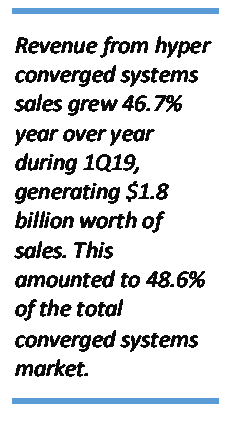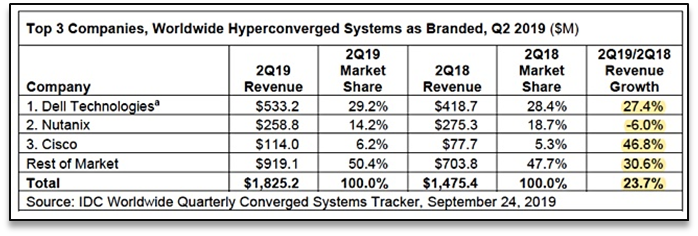With global hyper-converged sales now accounting for around 47 percent of the total converged systems market, Dell has been innovating rapidly with VMware in the space. VxRail, which is jointly engineered alongside VMware, is the foundation for the company’s Dell’s Cloud architecture. VxRail enhancements this year includes new systems based on the latest Intel and PowerEdge server technologies. HCI is not the right fit for everyone, although facing stiff competition from Hewlett Packard Enterprise, Dell remains the worldwide leader in servers and storage.
The CI/HCI world continues to evolve and do so quickly. This space did not exist as a tangible market six or seven years ago. Now enterprise IT groups are evaluating CI/HCI solutions with almost every new application deployment, VDI deployment, or infrastructure refresh/growth investment. This topic is one that is discussed in almost every meeting. Here at TIG we would to sit down with you and your team to begin the evaluation of CI/HCI and how these technologies could benefit or transform your business. CI/HCI solutions set the stage for massive IT transformation through elimination of silos and creation of green-field environments for IaaS and PaaS platforms.




Companies storing data on the cloud face multiple regulatory and compliance hurdles. In addition, economies such as Turkey have regulations that require data to be stored locally, in turn, boosting the demand for HCI systems across the globe. Hyper converged infrastructure (HCI) systems allow organizations to keep data safe in their on premise data centers, and provide multiple data protection features such as snapshots, replication, and encryption. These systems also include features such as redundant array of independent disks (RAID) and erasure coding, which helps to keep multiple copies of data in different systems. Some systems also come with built-in disaster recovery features, which aid in preventing business downtime. Such enhanced data protection offered by HCI systems will boost their adoption during the forecast period.
Here at TIG, as a growing solutions provider, we are acutely aware of the ever-changing demographics and needs in our various customer markets and how these changes influence future technology. For the past 36 years, TIG has consistently delivered innovative technology solutions to an expanding diverse customer base in enterprise, government agency, educational and SMB markets. Our ability to stay agile strengthens us and this commitment is a vital part of our business achievements and essential to our customer’s long-term sustainability.
From software and hardware procurement to discovery assessments, strategic planning, deployment, data center optimization, IT asset management and cloud computing, TIG offers custom-built IT solutions for our customers around the globe.
,p>Our Mission
TIG will earn its place as a trusted partner to our clients providing only the highest level of service, value and advanced technology to power their strategic business goals.
Solutions Architect
Technology Integration Group
https://www.gartner.com/doc/reprints?id=1-1XUE085H&ct=191202&st=sb&utm_source=gartner-launch&utm_medium=email